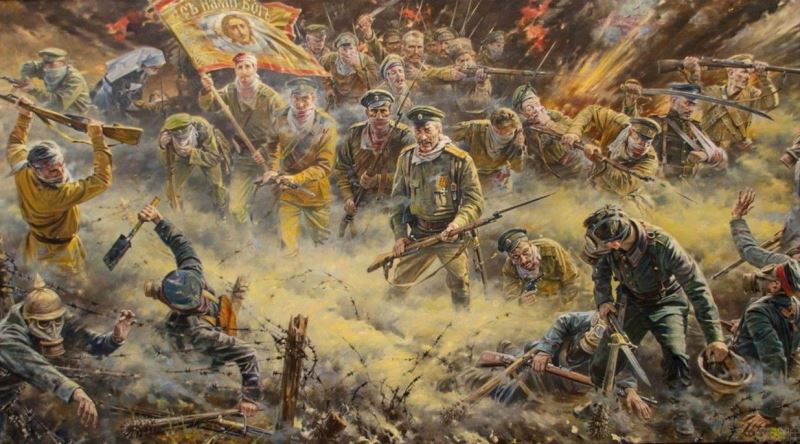World War I witnessed numerous horrors, but few stand out as unsettling and captivating as the “Attack of the Dead Men” at Osowiec Fortress. This article delves into the events that unfolded at the fortress in 1915, exploring the brutal siege, the desperate German gas attack, and the countercharge that defied expectations and cemented the legend.
A Fortified Gateway on the Eastern Front:
Osowiec Fortress, located in present-day northeastern Poland, served as a crucial defensive structure guarding the Russian Empire’s western frontier. Built in the late 19th century, the fortress was heavily fortified with trenches, artillery batteries, and underground bunkers. During World War I, it became a focal point on the eastern front, enduring two major sieges by German forces.
The First Siege and Stalemate (September 1914 – February 1915):
The first German assault on Osowiec occurred in September 1914. Despite heavy bombardment, the well-prepared Russian garrison successfully repelled German attacks. The ensuing months devolved into a stalemate characterized by artillery duels and skirmishes. Winter’s harsh grip further hampered offensive operations, forcing both sides to dig in and await a more opportune moment.
The Second Siege and the Introduction of Chemical Warfare (February – August 1915):
By February 1915, the Germans renewed their offensive with renewed vigor. This time, they incorporated a terrifying new weapon – poison gas. Chlorine gas, a choking agent, was deployed on February 18th, 1915, blanketing the Russian positions in a toxic cloud. Caught unprepared, many Russian soldiers succumbed to the gas, suffering agonizing deaths as their lungs filled with fluid.
Defying the Odds: The “Attack of the Dead Men” (August 6th, 1915):
Having weakened the Russian defenses with the gas attack, the Germans launched a ground assault on August 6th, 1915. However, what awaited them was a sight etched into military history. Russian soldiers, their faces contorted in pain and obscured by makeshift gas masks soaked in urine, emerged from their trenches. Coughing up blood and struggling to breathe, they launched a ferocious countercharge with bayonets fixed. The sheer shock and horror of being confronted by an enemy seemingly risen from the dead, coupled with the determination of the surviving Russians, overwhelmed the German forces. The Germans were forced into a retreat, suffering significant casualties.
The Aftermath and Legacy:
The “Attack of the Dead Men” marked a turning point in the siege of Osowiec. While the fortress eventually fell to German forces in August 1915, the event became a powerful symbol of Russian resilience and defiance. The story continues to be a source of fascination, highlighting the brutality of chemical warfare and the extraordinary courage displayed by the Russian soldiers under unimaginable circumstances.
The Unanswered Questions and Enduring Debate:
The exact details surrounding the countercharge remain shrouded in some mystery. The number of Russian soldiers involved and the effectiveness of their attack are debated amongst historians. Regardless of the specifics, there is no denying that the event transcended the realm of the ordinary, etching a haunting and unforgettable chapter in the annals of World War I history.
